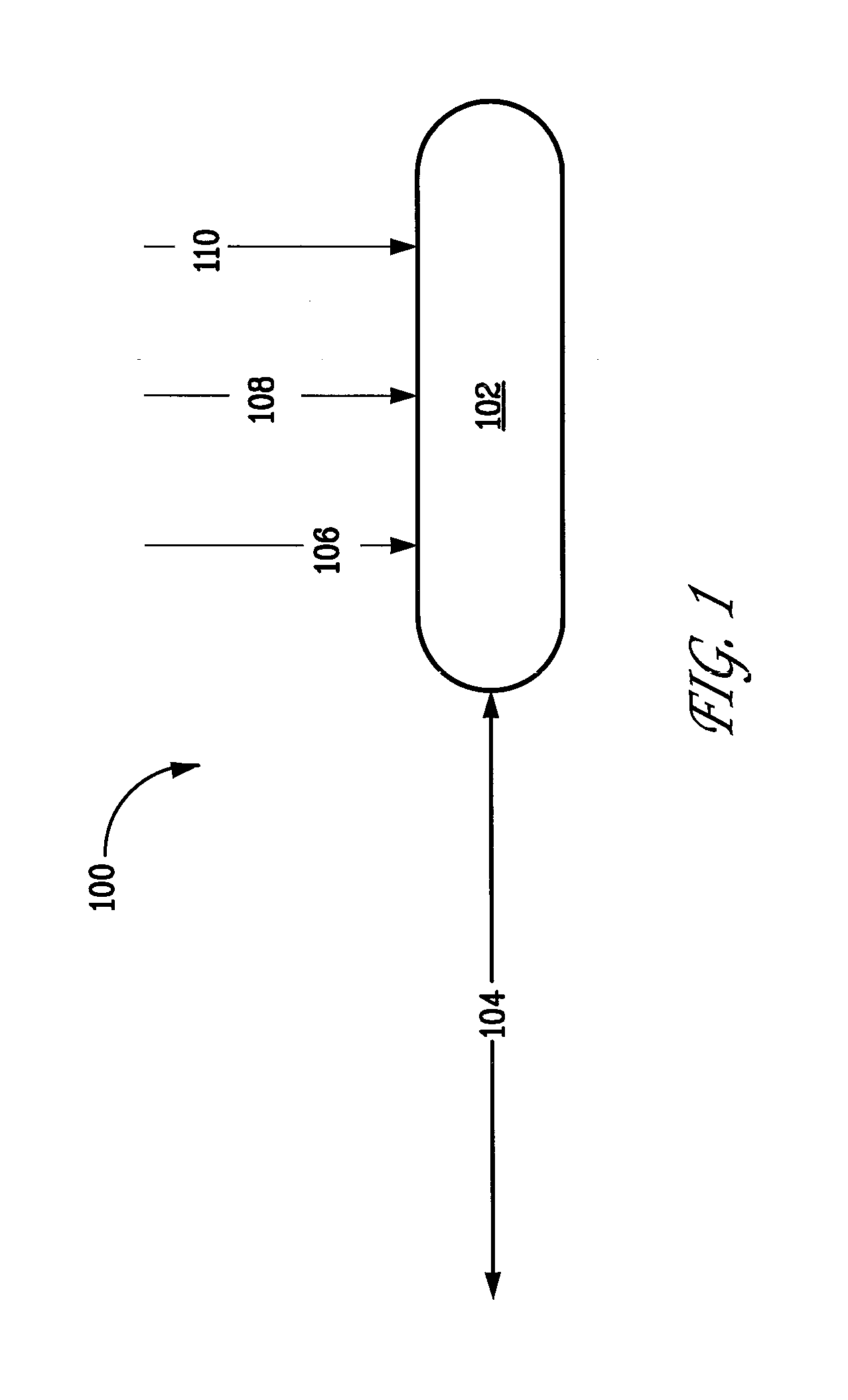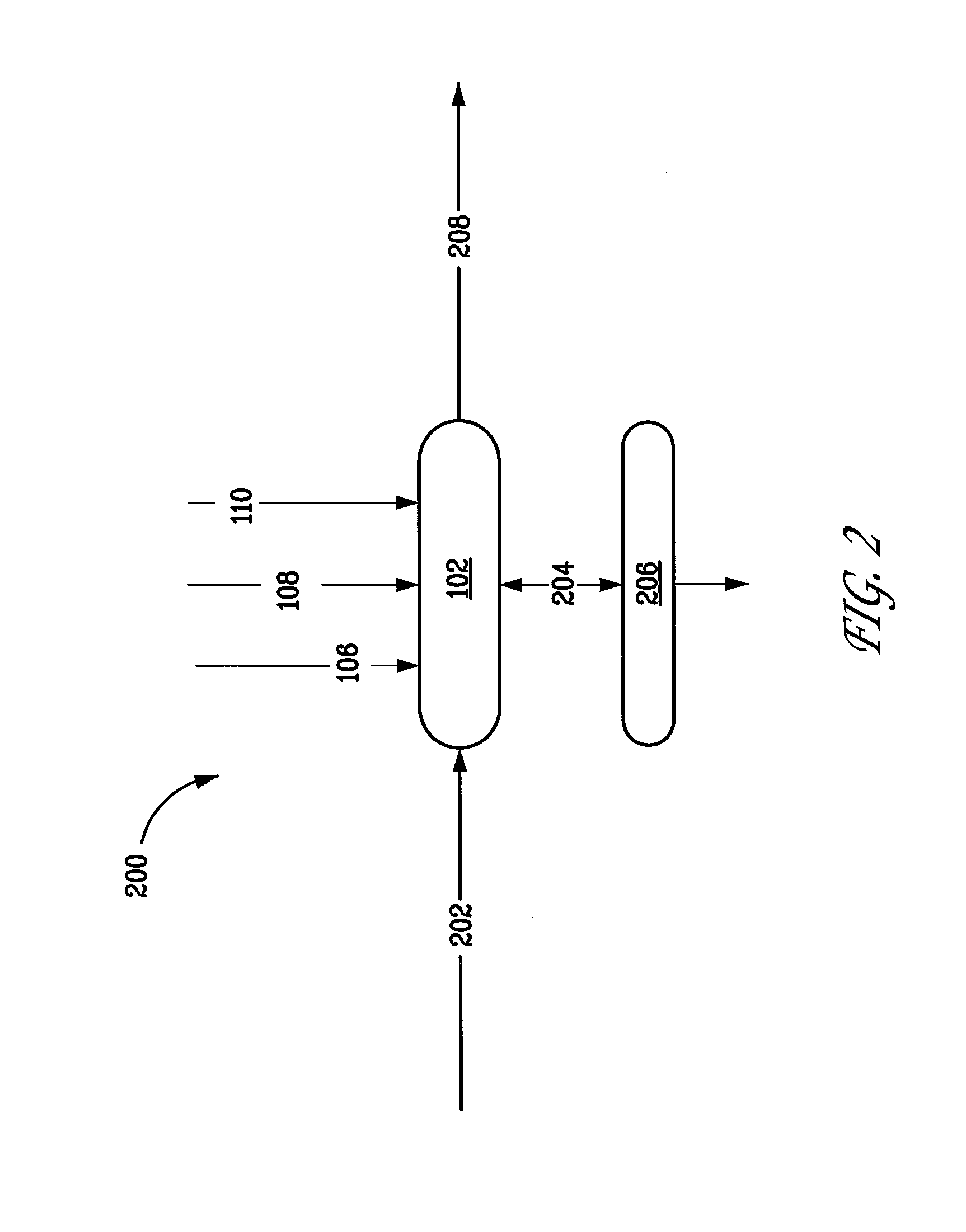Upgrading Carbonaceous Materials
a technology of carbonaceous materials and carbonaceous materials, which is applied in the direction of biofuels, waste based fuels, fuels, etc., can solve the problems of increasing affecting the heating efficiency of the combustion facility, and affecting the efficiency of the combustion process, so as to reduce the weight percentage of water and reduce the temperature of the atmosphere surrounding.
- Summary
- Abstract
- Description
- Claims
- Application Information
AI Technical Summary
Benefits of technology
Problems solved by technology
Method used
Image
Examples
examples and further embodiments
Example 1
[0223]Coal having a starting weight of 75,000 lbs. is loaded into a trolley. The total moisture content of the coal is 32 percent. Thus, the starting coal dry weight is 51,000 lbs, and the balance comprises water weighing 24,000 lbs. The trolley weighs 15,000 lbs. The starting temperature of the coal and the trolley is 60° F.
[0224]Step 1: Water at 200° F. is showered over the coal. As a result, the coal is warmed and the surface of the coal is wetted. The temperature of the coal increases to 150° F.; the temperature of the trolley increases to 150° F.; the temperature of the water decreases to 150° F.; the total moisture of the coal increases to 40 percent; the total weight of the coal increases to 81,000 lbs, including water weighing 30,000 lbs. The total heat requirement is 3,809,700 BTU. The total water requirement for step 1 is 76,194 lbs.
[0225]Step 2: The coal is moved from the trolleys to vibrating centrifuges to remove surface moisture. As a result, the coal is drie...
example 2
[0232]Coal having a starting weight of 75,000 lbs. is loaded into a trolley. The total moisture content of the coal is 32 percent. Thus, the starting coal dry weight is 51,000 lbs, and the balance comprises water weighing 24,000 lbs. The trolley weighs 15,000 lbs. The starting temperature of the coal and the trolley is 60° F.
[0233]Step 1: Water at 200° F. is showered over the coal. As a result, the coal is warmed and the surface of the coal is wetted. The temperature of the coal increases to 150° F.; the temperature of the trolley increases to 150° F.; the temperature of the water decreases to 150° F.; the total moisture of the coal increases to 40 percent; the total weight of the coal increases to 81,000 lbs, including water weighing 30,000 lbs. The total heat requirement is 3,809,700 BTU. The total water requirement for step 1 is 76,194 lbs.
[0234]Step 2: The coal is moved from the trolleys to vibrating centrifuges to remove surface moisture. As a result, the coal is dried to a tot...
example 3
[0242]Coal is withdrawn from storage and travels by belt conveyor to the crusher and is therein sized. The equipment crushes particles which exceed ¾ inch in size. Coal exiting the crusher is sized to 0 inch×¾ inch.
[0243]Coal is conveyed to the screen and processed. Screening separates the coal based on particle size. Small particles (“fines”) less than ⅛ inch are removed from the coal flow and conveyed to the product storage and blending facility. Screened coal is now sized ⅛ inch×¾ inch.
[0244]Coal is conveyed to the wet jig and processed. Coal passes through a water bath of a specified density that causes the desired coal, which is lighter, to be separated from the contaminants, which are heavier. The water used in the wet jig is hot water drawn from a tank in a water recycling system. Accordingly, the wet jig also raises the temperature of the coal to approximately 150° F.
[0245]Coal is conveyed to the centrifuge and processed. The centrifuge removes excess surface moisture from t...
PUM
| Property | Measurement | Unit |
|---|---|---|
| temperature | aaaaa | aaaaa |
| temperature | aaaaa | aaaaa |
| temperature | aaaaa | aaaaa |
Abstract
Description
Claims
Application Information
 Login to View More
Login to View More - R&D
- Intellectual Property
- Life Sciences
- Materials
- Tech Scout
- Unparalleled Data Quality
- Higher Quality Content
- 60% Fewer Hallucinations
Browse by: Latest US Patents, China's latest patents, Technical Efficacy Thesaurus, Application Domain, Technology Topic, Popular Technical Reports.
© 2025 PatSnap. All rights reserved.Legal|Privacy policy|Modern Slavery Act Transparency Statement|Sitemap|About US| Contact US: help@patsnap.com



